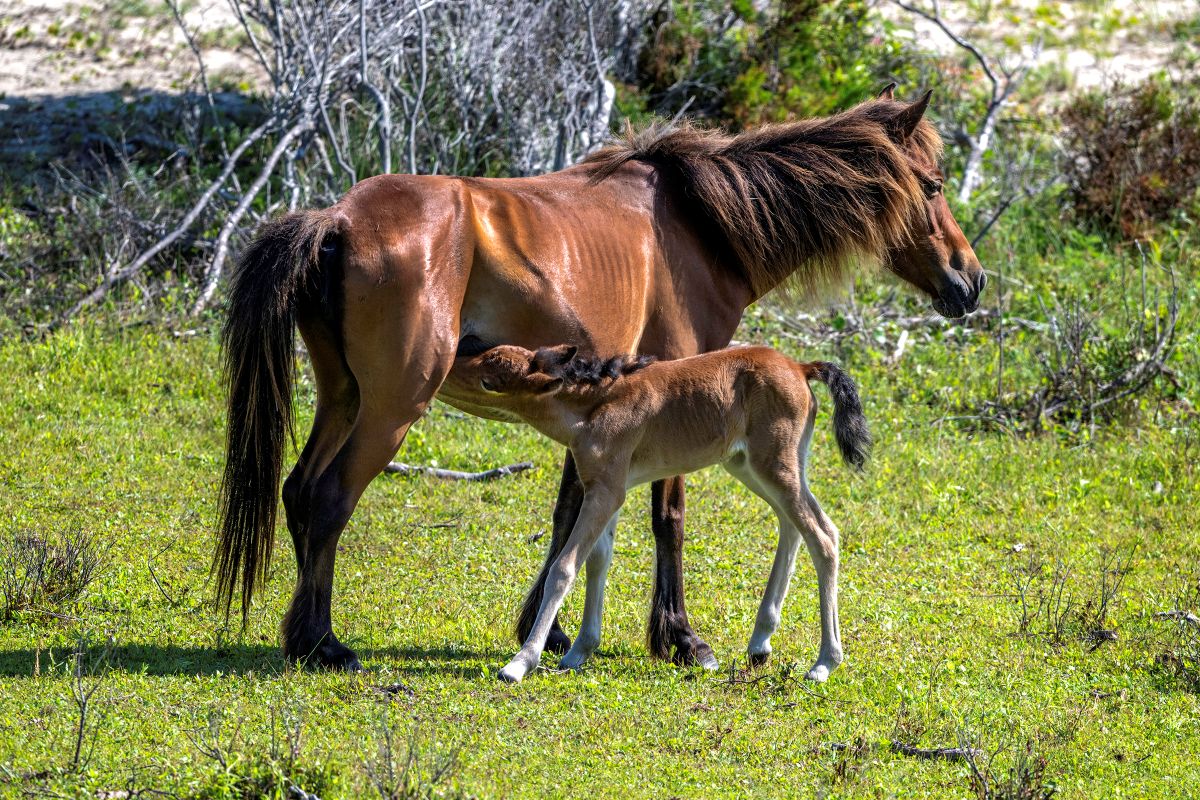
This is the last of two parts. The story is reprinted with permission from Bit + Grain, a new website devoted to telling the story of North Carolina – its people, places and culture.
Oyster cultivation along the N.C. coast holds much promise, as touted by proponents in the state legislature, but many of the challenges and barriers to restoration arise from conflict around the private leasing of a public trust, finding a robust strain of oysters suited for our waters, cost prohibitive barriers to entry and the stigma of aquaculture.
Supporter Spotlight
“In North Carolina we have public trust laws that preserve the waters for the benefit of the public,” says Erin Fleckenstein, a scientist with of the N.C. Coastal Federation.
The state’s bottom-lease program dates back to 1858 and Fleckenstein says the push to privatize oyster waters for aquaculture in the early 1900s was met with much public concern.
In 1991, the state leased its first water column, which includes the sound bottom to the water surface. Valerie Wunderly at the N.C. Division of Marine Fisheries reports that as of September there are 110 acres of water column leases.
Guarded Skepticism

Many coastal locals, particularly those in the Down East community of eastern Carteret County have seen their land taken away for preservation or development while fishing regulations, they say, threaten to cripple their livelihood. For them, guarded skepticism of leases seems warranted. In Fish House Opera, by Susan West and Barbara Garrity-Blake, Mary Gilgo of Atlantic explains: “Core Banks is our heritage. It belongs to me and to you. It’s a strip of Outer Banks where only God Almighty has the authority to say who can walk on it, who can fish on it, and who can clam on it. If you grant these leases, may God have mercy on your soul.”
A current moratorium on leases in Core Sound represents the apex of controversy in the public trust debate. For commercial fisherman, access to our waters is the only thing allowing them to earn a meager living. Barring access to the sound is bound to incite fear. And it’s true: water column leases do and will restrict access to public areas for boating and fishing.
Supporter Spotlight
Many believe Core Sound, one of the state’s cleanest and most productive bodies of water, offers an ideal environment to nurture North Carolina’s oyster economy. As a consequence, local fishing communities worry that leases will be concentrated in waters in Core Sound if the moratorium is lifted. While the fisheries division can control the number and location of leases, the potential dense concentration of leases in historically active fishing waters frightens fishing families.
Is it possible to create policy that ensures fair and balanced access to all? Though current lease practices have safeguards against abuse of private leasing, these regulations are not fully refined. While many rules and regulations may not go far enough to satisfy the fears of commercial fishing communities, others are a barrier to oyster farmers.
Jay Styron was born and raised in one of North Carolina’s most historic fishing communities, Cedar Island in far eastern Carteret County. He intimately understands the public’s mistrust but believes shellfish farms offer a unique opportunity to commercial fisherman.
“I try to explain to people, as much as we hate to see commercial fishing dying off, this is something that could at least allow some people an alternative,” he explains. “(Cultivation) is not going to be for everybody, but it gives someone who has wanted to work on the water their entire life, a way to work on the water.”

Other Challenges
While the public trust debate is a discussion that affects the future of our farmed shellfish industry, other challenges also exist. Currently, the majority of farmed oysters in North Carolina are from seedlings from colder, northern waters.
“There is thinking that maybe the triploid [Eastern] oyster isn’t as robust as a wild diploid [Eastern] oyster and that all these [triploid] hatchlings from Virginia and north aren’t as accustomed to North Carolina’s environment,” Styron says.
With this in mind, researchers at the University of North Carolina Wilmington’s Shellfish Research Hatchery are working to develop a stock of triploid oysters selectively bred from wild stock adapted to the state’s coastal waters. Developing a robust, high-yield triploid oyster that naturally thrives in North Carolina’s waters is an important part of proving that oyster farming can be a viable industry in the state.
There are financial barriers to entry for new growers, too. Styron estimates that it takes $20,000-$30,000 to farm an acre of oysters and nearly 18 months to bring the first harvest to market. Growing a sizable, profitable oyster farm takes upfront capital, commitment and work.

The shellfish mariculture industry must also set itself apart from fish farming to thrive, Fleckenstein says. “In general, aquaculture has gotten a bad rap because of feed or antibiotics,” she notes. “But [oyster] mariculture isn’t like that at all. Oysters are filter feeders so they are feeding what’s already in the water. It’s all largely a very natural process.”
The N.C. Rural Economic Development Center reports that several pounds of plant- or animal-based feed are required to grow one pound of farmed fish but that filter-feeding oysters, which only need clean water to grow, improve their environment instead of polluting with waste.
Shellfish cultivation in North Carolina is well-poised to respond to growing public demand for safe and sustainable seafood yet, in 2007, aquaculture production represented 1.1 percent of the total shellfish produced along the East Coast.
North Carolina total shellfish aquaculture sales in 2012 had a value of an estimated $908,975 – 97 percent less than the direct economic impact in Virginia, the center reports. For every dollar of oysters from an aquaculture operation in North Carolina, $16.05 was sold in Virginia. Despite the size of our estuarine system and the legacy of oystering in our state, North Carolina is unable to meet its own market demand for shellfish.
“There is not a lot of coastal industry in North Carolina, and this is an industry that could be promoted that would complement the region’s culture and tourism along the coast,” says Fleckenstein. “It dovetails really nicely with what we would want to preserve and promote along the coast. It’s not oil and gas or other types of industry.”

Some advocates for struggling coastal communities see government support of the shellfish industry as a way for the state to empower commercial fishing in the same way it has helped traditional farming communities innovate and thrive in the 20st century.
Styron thinks the cultural moment is right for oysters. “This type of industry and enterprise fits perfectly into the slow food and locavore movement,” he says.
To think solely of oysters as a commodity is missing the point. Legend and lore of these prehistoric mollusks have commanded our cultural imagination for millennia. From Dutch still-life painters to the architects of the Sydney Opera House, the mystery and form of oysters have captured the eyes and hearts of artists for centuries.
Raw, steamed, fried, stewed, baked, poached — these invertebrates are the backbone of many traditional North Carolinian coastal recipes and the main event at oyster roasts, events that bring people together during the coldest months of the year. They are a food of the elite and of the common man. Like wine, oysters take on the natural flavor of their habitat. To eat an oyster is to taste a place.
“They carry the name of the place and its terroir,” says Styron. “A lot of people say oysters have ‘merrior.’ They are this water and what they soak up. They are this algae. They are this salinity. It’s all tied to this area.”
The story of the Eastern Oyster — its past present and future — reveals much about our relationship with North Carolina’s most precious natural resource. Whether or not we realize our potential to become the “Napa Valley of Oysters,” as author Rowan Jacobsen suggests, the debate over oysters in North Carolina forces us to consider the health of our waters, the policies that have transformed coastal communities’ ways of life and how serious we are about sustainable investment in local economies.







